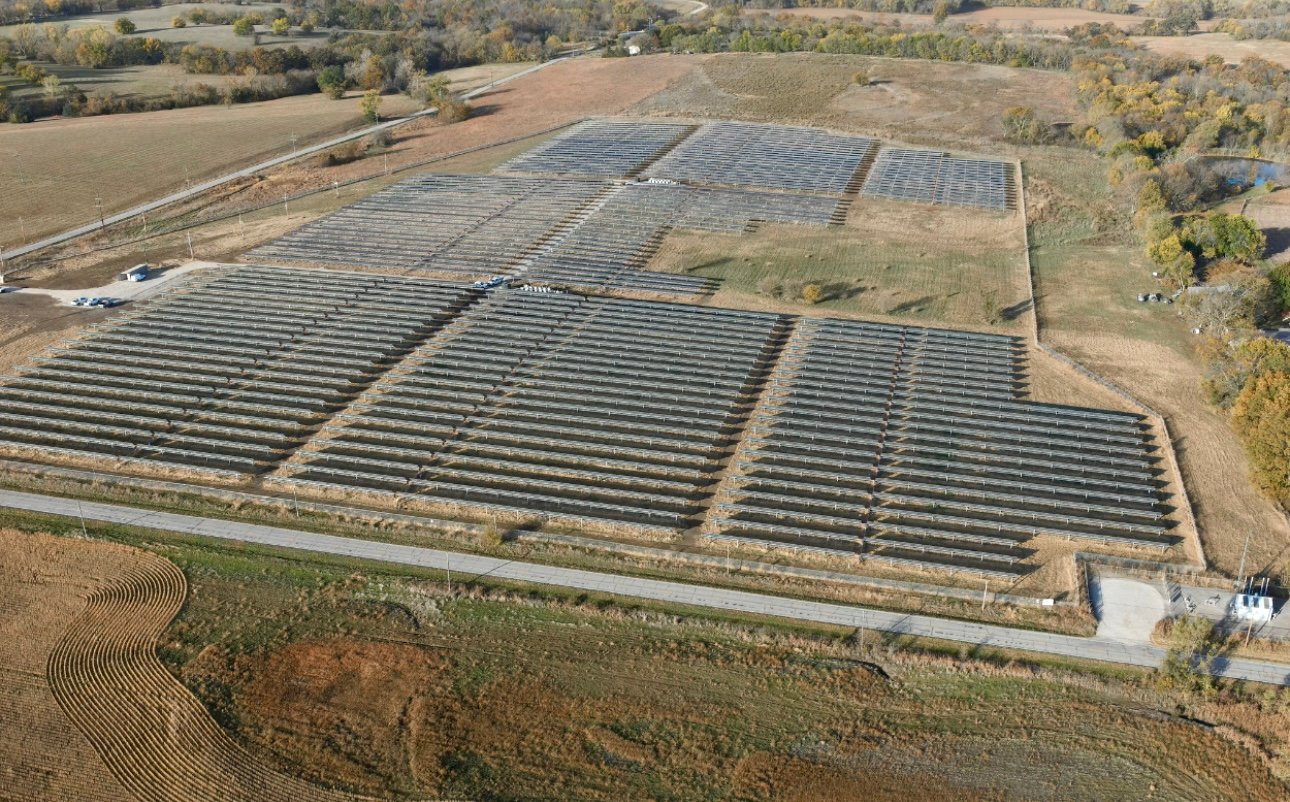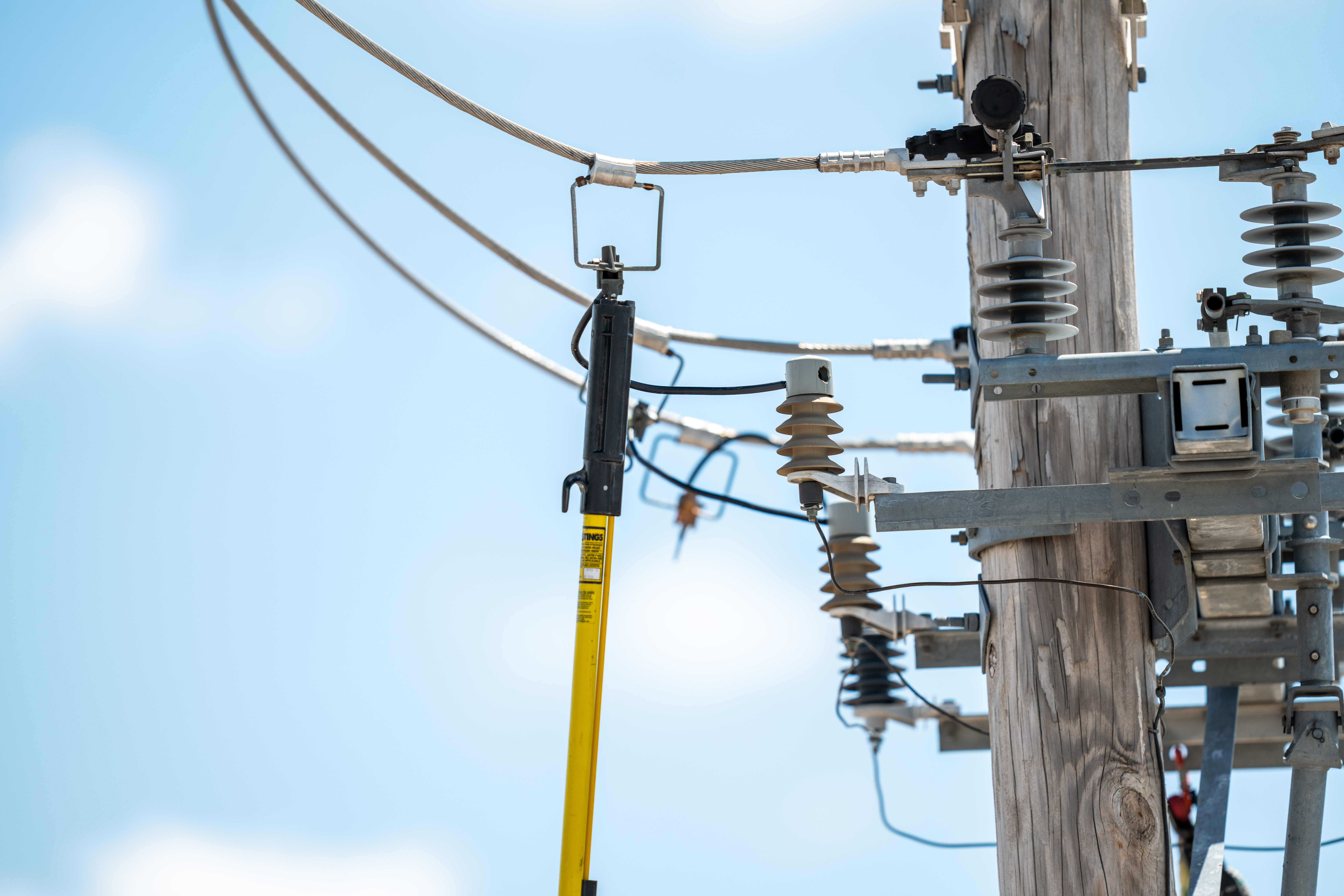Case Study: Osawatomie Solar Array
Evergy is committed to providing our customers with cost-effective, reliable renewable energy solutions to help build a more sustainable future....
3 min read
 Lindsay Freeman
:
Nov 1, 2021 12:30:59 PM
Lindsay Freeman
:
Nov 1, 2021 12:30:59 PM

Approximately 85 percent of the world’s energy comes from non-renewable sources, such as oil, natural gas, and coal. As global energy consumption continues to rise, there is a growing demand for renewable energy, including wind, solar, hydroelectric, and more.
The shift to renewable energy is inevitable and will likely have a lasting impact on how we source energy moving forward. However, that doesn’t mean it’s time to jump ship on non-renewable sources. Instead, consider diversifying your existing energy portfolio with a variety of renewable sources with long-term power cost benefits.
Not only will this reduce your carbon footprint and appease the growing demand from consumers to go green, it can also offer cost effective and reliable energy solutions. A strong, diversified energy portfolio should include a combination of non-renewable and renewable energy sources to reduce energy costs and avoid power intermittency.
Like any industry shift, investing in renewable energy has its risks. It’s vital to understand those risks, in order to better understand the impacts to the customer’s bill for utilities, municipalities, and cooperatives for a low-risk renewable strategy.
The key to mitigating these risks is portfolio diversification, with varying fuels, technologies, renewables, and contract terms. Invest in a variety of renewable and non-renewable sources that provide a cost-effective, constant power supply that can work together to provide security even for unusual circumstances, like extreme weather events.
Reducing your carbon footprint is important, but we understand that there has to be real business incentives to justify investing in renewables. As renewable technology improves, the return on investment is clear.
As the global demand for energy grows, the longevity of non-renewable sources becomes less certain. Renewables offer a long-term energy source that does not rely on fossil fuels. Adding renewables to your energy stack is attractive to consumers because it offers a forward-looking approach to energy that reduces your carbon footprint. Plus, many renewable sources, such as wind and solar, are built to last several decades so you can trust that your investment will pay off in the long run.
Some renewable energy sources, such as solar and wind, are becoming more affordable than non-renewable sources, and that price gap is likely to continue growing. Renewable energy tax credits will drop incrementally over the next several years. However, Evergy Energy Partners has safe-harbored materials left to take advantage of the 30 percent tax credits until 2025. We also have the capital to lock in pricing at the start of a renewable project to avoid price fluctuation.
Adding renewables to your portfolio poses a risk of intermittency, or gaps in power. To mitigate this risk, we recommend a diversified portfolio, with both non-renewable and renewable energy sources that can provide a smoother transition without the risk of intermittency during peak hours, peak seasons, or inclement weather events.
Renewable portfolio standards (RPS) vary from state to state. Some are voluntary while others are mandatory. It’s important to meet renewable energy regulations, even if they are optional. Not only does this appeal to consumers who are increasingly demanding environmentally-friendly energy solutions, it also safeguards you in case voluntary standards become mandatory or regulations become more strict in the future.
What does the future of renewable energy look like? There are endless possibilities for the path forward, but one thing is certain: all paths point toward less carbon. This will likely mean more options for renewable energy sources, such as nuclear, hydrogen, and even battery storage.
We could also see an increase in incentives for consumers to use energy more efficiently with advanced technology in smart meters. Smart meters give end users more detailed insights into how energy costs vary throughout the day and year, and how they can use energy more efficiently during peak periods. This could potentially curb the growing demand for energy globally.
Evergy Energy Partners is committed to providing our customers with cost-effective, reliable renewable energy solutions to help build a more sustainable future. We have decades of experience developing diverse energy solutions with substantial long-term power cost benefits to utility, municipality, cooperative, and industrial customers.

Evergy is committed to providing our customers with cost-effective, reliable renewable energy solutions to help build a more sustainable future....

People's Electric Cooperative (PEC), an electric cooperative serving rural areas in south-central Oklahoma, joined forces with Evergy Energy Partners...

The energy landscape of the United States is rapidly changing, driven by a focus on clean energy and the need for a more flexible and resilient grid....